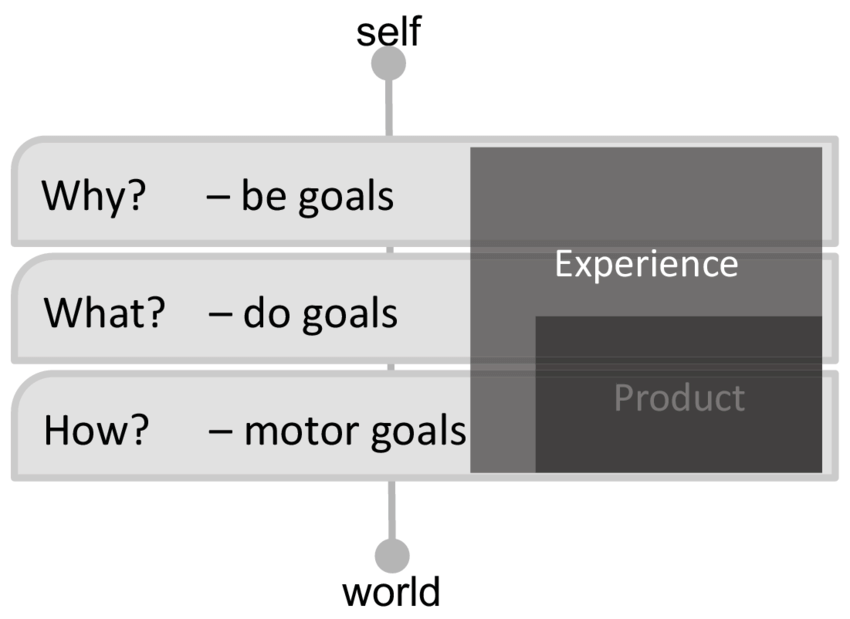Designing AV Experiences: From Doing to Being

Experiential design is an interdisciplinary approach that places people at the center, creating environments conceived to generate meaningful experiences and promote the well-being of those who inhabit or visit them. While initially applied mainly to museum space design, it is now increasingly common to integrate this approach into all types of projects.
Thinking first about the experience we want to offer users, even before defining any system, becomes essential. Because, at the end of the day, what we really remember — and seek to repeat — are those positive experiences that left a mark on us.

But what is an experience, really?
The Royal Spanish Academy defines it as the “fact of having felt, known, or witnessed something.” However, this definition falls short when it comes to designing effective technology-mediated experiences.
Digging deeper, I found different approaches that help enrich our professional perspective, especially when considering how our AV environments are experienced:
Psychologist James Russell (2003) introduces the concept of “emotional meta-experience,” in which all components of an experience (perception, emotion, cognition, etc.) generate individual effects, but it is a higher-level process — a metaprocess — that integrates them into a coherent narrative. He defines it as:
“Emotional meta-experience is the construction of a coherent narrative, interpreting, structuring, and labeling the episode, integrating it with general knowledge.” (Russell, 2003, p. 165)
From a design standpoint, this distinction is useful. But for the user, the experience is one single thing, regardless of whether it was mediated by a videowall, a videoconferencing system, or an interactive collaboration environment.
M. Hassenzahl, in his book Experience Design: Technology for All the Right Reasons (2010), argues that emotion lies at the heart of every experience. It arises from the interaction between perception, action, motivation, emotion, and cognition, in dialogue with the environment (space, time, people, objects). In the AV world, this is clearly manifested, for example, in a hybrid meeting where remote participants genuinely feel included: here, technical and emotional aspects converge.
Meanwhile, McCarthy and Wright (2004) emphasize that experience is unique and irreducible to its parts. If we analyze an AV system only by its image resolution or latency, we risk losing sight of what really matters: how the person using it feels.
That said, we also know it is possible to shape experiences by applying certain rules: ambient lighting, acoustic design, content distribution on screens, etc., can influence how a space is perceived. But experience remains an emergent phenomenon: we can intend it, but not fully predict or control it.
In his model, Hassenzahl proposes two different ways to approach interaction design:
Instrumental (traditional) approach
This approach assumes users interact with technology to achieve concrete goals, so design should focus on facilitating those actions efficiently and clearly. It is organized into three hierarchical levels:

- Motor-goals: basic physical actions, like pressing a power button or touching a panel.
- Do-goals: operational objectives, like sharing content from a device or starting a video call.
- Be-goals: deeper personal goals, like feeling prepared to present, being connected with a distributed team, or being perceived as professional.
So far, most design in HCI and AV has focused on motor-goals and do-goals, privileging functionality, usability, and accessibility.
Holistic (experiential) approach
This approach suggests going beyond “how” technology is used, to ask “why” people use it and “what” they want to feel when doing so.
For example, starting a video call is not, in itself, a meaningful experience. But it becomes one when that meeting helps maintain cohesion in a global team, even across different time zones. Here, be-goals such as feeling part of something, contributing, or being recognized come into play.
Emotions are deeply involved: AV design not only solves technical problems but also modulates how we feel in a space, a meeting, or an interaction.
Conclusión
Thinking about AV design from a holistic approach forces us to consider not only the efficiency of solutions but also their emotional and symbolic impact.
This doesn’t mean we cannot standardize processes or systems, but it is worthwhile to maintain quality and excellence management that takes into account the individuality of each client and context.
Research, empathy, and technical knowledge at the service of experience.
References
- Hassenzahl, M. (2010). Experience design: Technology for all the right reasons. Morgan & Claypool Publishers. https://www.researchgate.net/publication/220696314_Experience_Design_Technology_for_All_the_Right_Reasons
- Russell, J. A. (2003). Core affect and the psychological construction of emotion. Psychological Review, 110(1), 145–172. https://doi.org/10.1037/0033-295X.110.1.145
- McCarthy, J., & Wright, P. (2004). Technology as Experience. MIT Press. https://www.researchgate.net/publication/224927635_Technology_as_Experience
-
Xchange Advocates are recognized AV/IT industry thought leaders and influencers. We invite you to connect with them and follow their activity across the community as they offer valuable insights and expertise while advocating for and building awareness of the AV industry.






Please sign in or register for FREE
If you are a registered user on AVIXA Xchange, please sign in